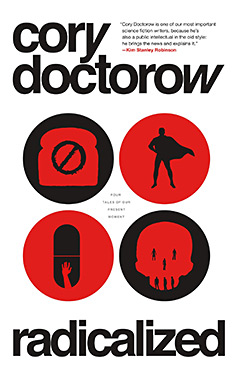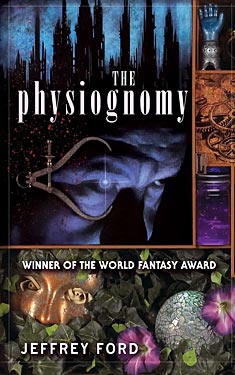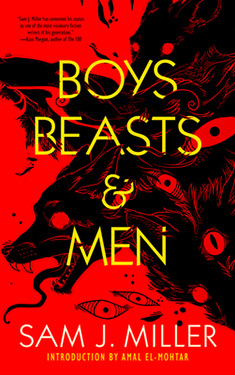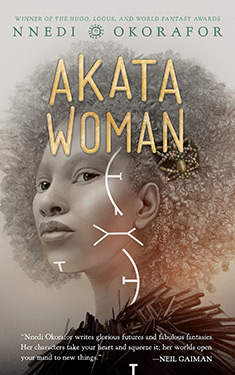Cory Doctorow
Completed 7/30/2022, Reviewed 7/30/2022
4 stars
Four novellas elaborating on the fears and horrors of today and the near future. Each story takes a contemporary topic, gives it a personal perspective, and draws it out to a scary yet realistic conclusion. I saw Doctorow on a tour of libraries he did five or so years ago. He’s an excellent speaker and has his finger on the pulse on the problems of modern society like social injustice, insurance, and the fear of the apocalypse. It’s an excellent collection, told in a sort of journalistic style, and his extrapolations are horrifying in their realism.
“Unauthorized Toast” is a brilliant depiction of the future of the treatment of immigrants and the poor. Cheap products are made, like toaster ovens and dishwashers, that only allow you to use certain brands of bread, frozen meals, dishes, detergent, etc. One immigrant woman finds on the dark web a way to circumvent the controlling software. It puts herself and everyone she’s helped in jeopardy of punishable copyright violation. This story was the best of the bunch.
“Model Minority” was an okay take on the Superman/Batman fantasy. A superhero called the American Eagle tries to fight for the rights of a black man who has been wrongfully beaten and incarcerated by white, racist, corrupt cops. He finds that he must face his own hypocrisy for not helping blacks during the Jim Crow era.
“Radicalized” is the scariest of the stories. It’s about a man who encounters a terrorist organization on the dark web, consisting of the men who’ve lost their wives or children to cancer because insurance companies wouldn’t pay for treatment, while he himself is dealing with his wife’s stage 4 breast cancer.
“Masque of the Red Death” is a modern treatment of the Poe classic. A rich despotic high financier gathers around thirty people into an enclave when the end of civilization as we know it approaches. They hide out, refusing others refuge. When things seem to return to normal, a few venture out to trade for some supplies, and of course, they bring back a pandemic.
I really enjoyed these stories, though they are not fun. Some are even cringeworthy in their portrayal of realistic scenarios. This was especially true of “Model Minority”, with the washed-up Eagle being less than loved as he was in the early part of the last century.
Doctorow does an excellent job of bringing his characters to life, making you feel empathy for them, except for the rich despot in “Masque”. Instead, you just hate him. But whether you love or hate the characters, you feel something for each of them. There isn’t much humor in the stories. It’s mostly irony. But it really works. I give this book four stars out of five. I think it’s a must read for anyone who has an ounce of social justice awareness in their bones, and probably for those that don’t have any, to see what could be played out if we continue on the path we’re heading.





